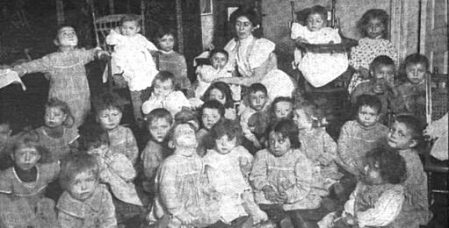It’s a phantom relic of 19th century New York: the hauntingly preserved facade of an orphan asylum chapel built in 1898 at 402 East 90th Street.
Facing York Avenue to the east, the chapel facade rises several stories and is embedded into the side of a 12-story condominium.
And it’s in view for contemporary New Yorkers to marvel at thanks to a construction project that bulldozed the parking garage in front of it—which for decades had shielded so much of it from sight.
 The chapel was once on the grounds of St. Joseph’s Orphan Asylum, founded in 1859 by a German Catholic religious order called the Redemptorists, “for destitute children of German parentage, writes David Dunlap in a 2008 New York Times article.
The chapel was once on the grounds of St. Joseph’s Orphan Asylum, founded in 1859 by a German Catholic religious order called the Redemptorists, “for destitute children of German parentage, writes David Dunlap in a 2008 New York Times article.
Yorkville was the country at the time, an ideal place for an orphanage, of which there were many in the city at the time, typically run by a religious sect.
St. Joseph’s “occupied several buildings between 89th and 90th Streets and York and First Avenues,” states Daniel B. Schneider in a 1998 piece in the New York Times.
 As Yorkville grew in the second half of the 19th century and eventually replaced the East Village as the city’s Little Germany neighborhood, a parish called St. Joseph’s was formed in 1873—borrowing the name of the orphan asylum and soon building its own church and school.
As Yorkville grew in the second half of the 19th century and eventually replaced the East Village as the city’s Little Germany neighborhood, a parish called St. Joseph’s was formed in 1873—borrowing the name of the orphan asylum and soon building its own church and school.
The orphan asylum remained, as this late 19th century images show. it was described in King’s Handbook of 1892 as “a large and cheerful edifice with accommodations for nearly 300 inmates.”
The asylum stood until about 1918, when land values rose and parts of the property was parceled out for sale.
Layers of New York development obscured it, and now the chapel facade is slated to be covered up entirely when the construction project—an athletic center for the Spence School—is finished.
[Third and fourth photos: NYPL] Thanks to Charlie J. and the Friends of the Upper East Side Historic District for bringing this to my attention]





























